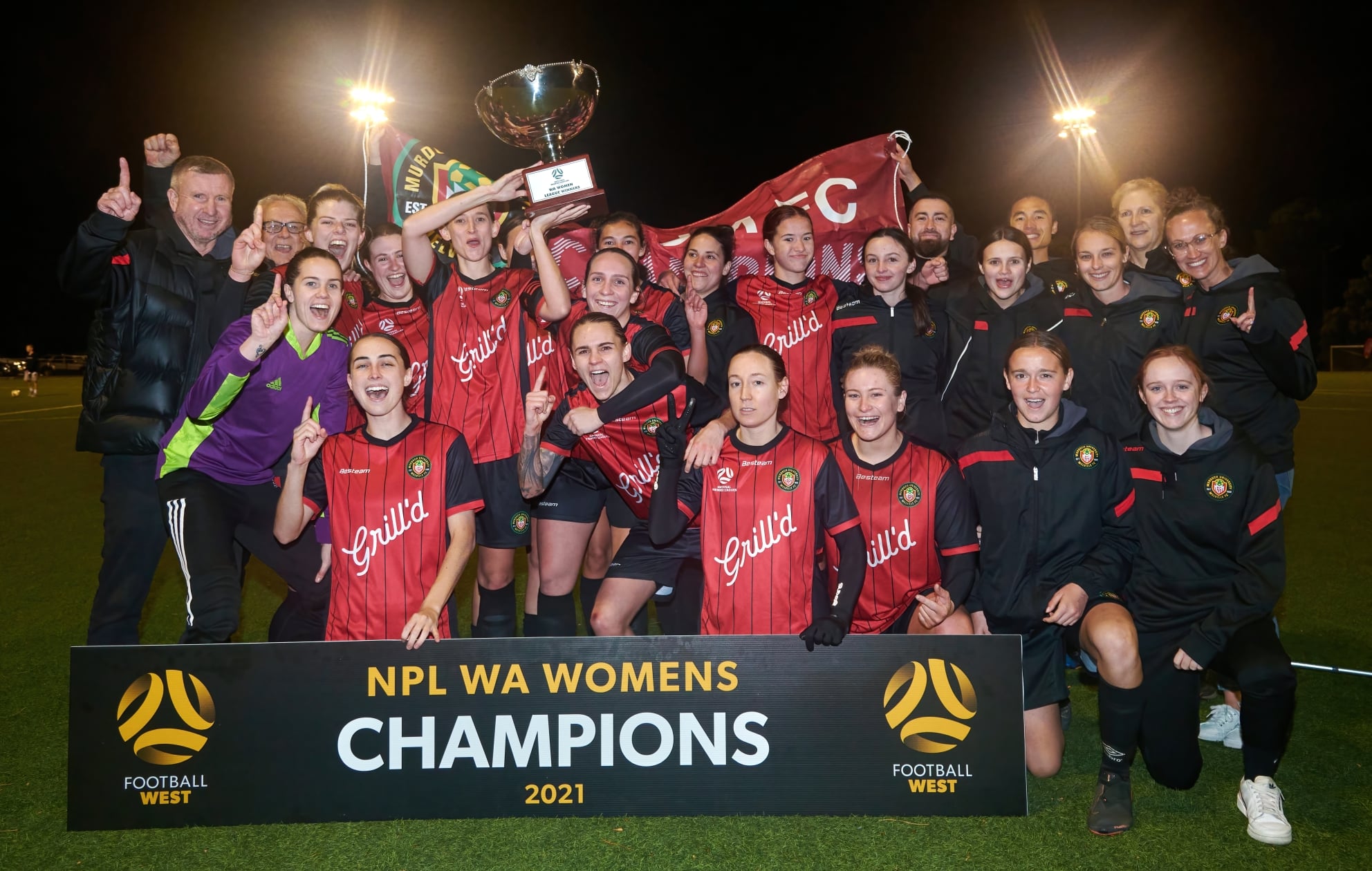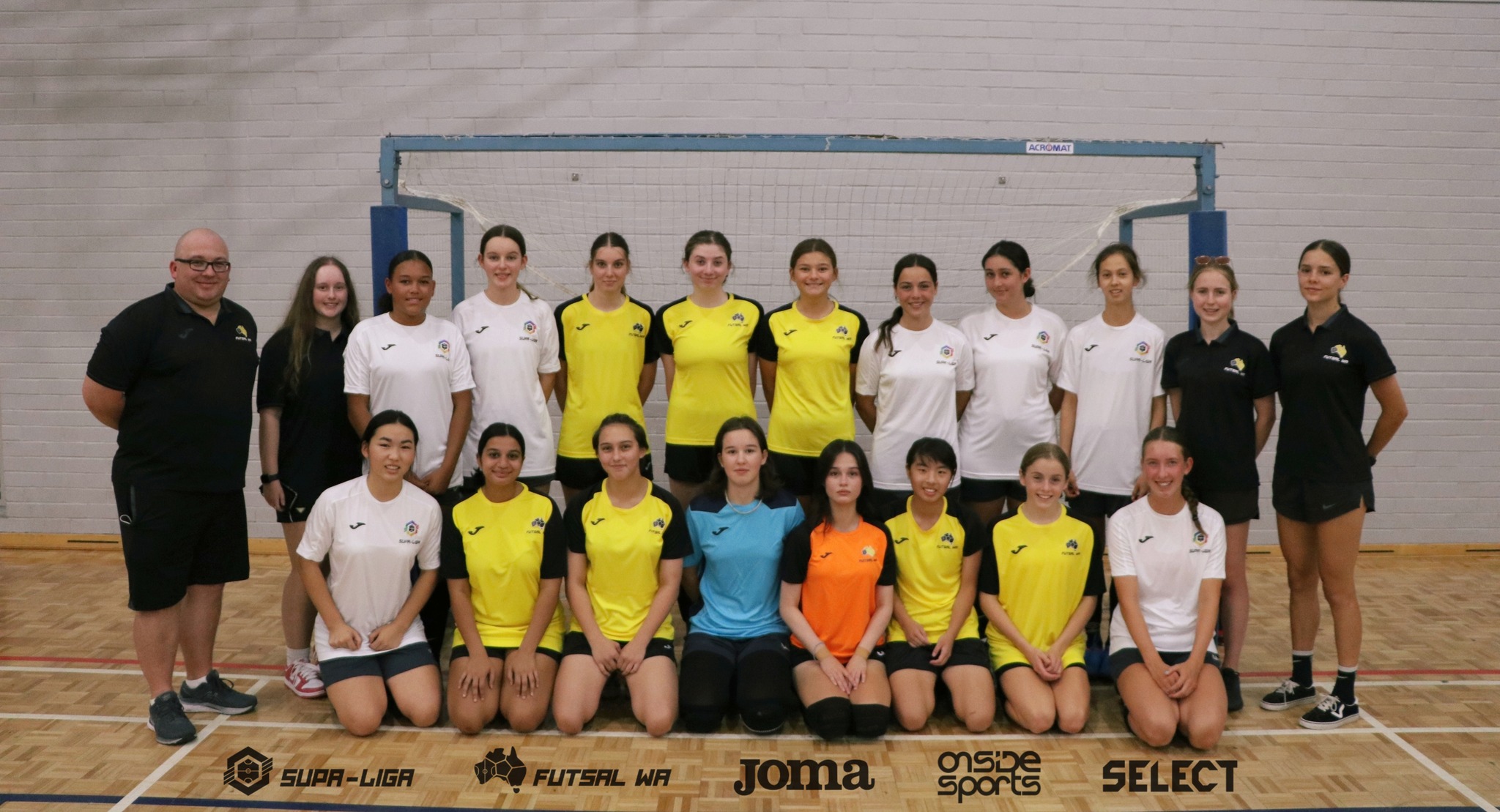

A truly remarkable turnaround in one season has seen Perth Glory go from wooden spooners in season 2020/21 to just missing out on a top four finish by goal difference this time around.
This occurred in spite of playing just one home game and is the result of a huge amount of hard work by the players and coaching staff.
There is, quite rightly, a great deal of pride in the achievements of the team but this is tempered somewhat by the fact that the playing group was dominated by interstate and overseas players.
In over a third of the games, there were three or fewer WA born and bred players in the starting eleven and in half of the games, there were 5 or fewer in the 16 player game-day squad. Of the 13 players who played more than seven games, five were from WA and just two (Hana Lowry and Morgan Aquino) were under the age of 21. The other three WA players were 28 or older.
In season 2020/21 there were 17 WA players at two clubs in the W-League who played a total of 9189 minutes in the 12 game season. In 2021/22, there were 13 players at four clubs, and they played 5717 minutes in a 14 game season.
The drop in the number of WA players coming into the A-League is also reflected at the national level with only two West Australians in the current Matildas squad (Sam Kerr and Lydia Williams), and the last WA player to make a Matildas debut was Kerr in 2009.
Young Matildas representation is not a lot better with the last games played being at the 2019 AFC U20 Women’s Asian Cup in Thailand. Aquino and Abbey Green were in the squad for that tournament but didn’t feature in any of the five games played.
These numbers paint a picture of a decline in the numbers of WA players at the elite level so how can this be addressed?
An obvious starting place is with the elite club in the state, Perth Glory. They have a mature and well-established men’s academy that is supplying players to the A-League Men, but this level of investment in male youth is not matched for female youth players. Clubs such as Melbourne Victory, Canberra United and Newcastle Jets have all invested in women’s youth academies which have resulted in local players coming into their senior sides.
Beyond 90 approached Perth Glory to see if they have plans for a women’s academy and improving their investment in developing players for the A-League Women but they did not provide a response before this article was published.

The role of Football West in developing female talent is also very important in WA. The NTC program has basically been the sole avenue into higher levels of football in WA for many years, with players such as Kerr, Ella Mastrantonio, Marianna Tabain and Shannon May all going through the program. However, there are signs that it is no longer delivering the sorts of numbers of players to the A-League that it once did. There were just two players from the 2021 NTC squad selected for Perth Glory this season and neither of them played a single minute. NTC has also failed to deliver a senior national player since 2009, whilst the only WA player at the last Matildas Talent ID camp for the 2021 Tokyo Olympics squad was Lisa De Vanna.
When questioned as to whether the NTC program was still considered to be the right pathway to produce players capable of representing Australia at the Matildas level or playing in the ALW, Football West said:
“Football West strongly supports the Hyundai Girls NTC program in line with Football Australia’s elite talent development pathway for female players. The Hyundai NTC delivers a high-quality match and training environment with a minimum of three training sessions and one game each week during the season. In addition to football, players have access to wellbeing monitoring, sports science and conditioning and other tools to assist their development.”


In addition to Perth Glory and Football West, the responsibility for developing young female talent must also be shared by the local NPLW, which was introduced into WA in 2020 and is about to enter its third season. It was meant to signal the start of better player development and to improve pathways into elite football. As part of the NPLW license, clubs were expected to set up junior pathways which would eventually lead to players playing in the NPLW. After two seasons there appears to be little evidence of this occurring with just two players from the NPLW having made their A-League debuts since the league commenced.
As per the terms of the NPLW licence, teams must have at least one junior team in the junior leagues. Outside of the NTC, all bar one of the teams satisfy this minimum criterion, but only two have a full pathway from U12 to U18’s at the division one level. This absence of clear junior pathways at NPLW clubs is leading to some young players turning to non-NPLW clubs for game time.
The disparity amongst the NPLW clubs in developing female players is mirrored in the men’s game, with just under half of the 12 NPL men’s teams having no women’s teams in the NPLW or state leagues in WA, and three-quarters of them have no junior women’s teams at the Division 1 level of the junior age groups.
This lack of development in the women’s game by men’s NPL clubs is not something that is reflected by the Association of Australian Football Clubs, which recently released its final report into the setting up of a national second division (NSD).
As part of its recommendations for an NSD, the report stated the following:
“ … while plans are being developed for a Women’s NSD, NPL clubs, including the members of the Partner Group, will continue their increasing commitment to Women’s football. From the outset, it is proposed that it will be a requirement for any club seeking entry into the men’s NSD to have a comprehensive women’s programme – even before a WNSD is in place.”
Football West was contacted to comment about the situation of some NPLW clubs not having junior pathways and some men’s NPL teams not having women’s programs and a spokesperson said:
“Football West will continue to support its clubs and associations to provide opportunities for all participants in the community, including advocating for improved facilities for female football and working with clubs to implement female football programs.
As part of the growth of female football, Football West is reviewing its senior female competition structures from NPL WA Women’s through to its Metro Leagues to ensure clear criteria and requirements that are fit for purpose across the different levels, while also allowing for growth and movement through the structure. This will be done in line with Football Australia’s Club Licencing Framework that is currently in development.”
The competitive strength of the NPLW is also of concern as a strong league often raises playing standards. Unfortunately, the league has reverted to the status quo prior to its introduction with the disparity between clubs as broad as ever. Last season’s competition was effectively a two horse race for over half of the campaign, and teams winning by eight or more goals was quite common. The players themselves are now providing evidence of where the league sits in terms of national standards as they are leaving WA to play NPLW in NSW and other states. In 2021 Leticia McKenna, Lowry, Aquino, Miranda Templeman and Lexie Moreno were all playing in NSW, and they will be joined in 2022 by Baxter Thew, Ellie La Monte (Tasmania) and possibly Green. The loss of these players only serves to weaken the league still further and this, in turn, makes the jump from NPLW WA to A-League even more challenging.
With only a handful of clubs providing a true pathway for female players from juniors to state league and upwards, players are looking to other avenues to help them play at the highest level, and one route, in particular, that is proving popular is futsal.


Greg Farrell runs the Futsal Association of WA and is also the Australian Women’s coach for the Australian Futsal Association team heading to the International Futsal Alliance World Cup in Spain in September, and he described the set-up of futsal in WA.
“Football West receive government funding and sanctioning through Football Australia. The association was set up to help develop and grow the sport in the absence of that happening from elsewhere. We run social leagues at several venues and then separately have elite development pathways which includes junior academies, school Futsal titles (which had more than 170 teams compete in 2021), and club and representative opportunities.”
Farrell had this to say about the attitude of clubs and governing bodies towards futsal.
“Most clubs and governing bodies view it (Futsal) as a threat, something that might take players away from the 11-a-side game and treat it as such. We’ve had players in Perth and around Australia playing futsal all year round for a while now, and those players are starting to move to the forefront of the local and national game. Rhianna Pollicina, Katrina Gorry and Tom Rogic are excellent examples of players that have played a great deal of futsal. If clubs engaged with futsal the way European clubs do, sharing coaching resources, running sessions where coaches attend across sports (also including basketball), there would be huge benefits for the players, clubs and the games themselves.”
Another area of growth for female players are private coaching companies, with players turning to them to augment the coaching they receive at the club level. These companies range from individuals running their own clinics in public spaces to businesses operating out of custom-built premises.


Two Halfs Football Development are a well known coaching business in the WA football community who count Mastrantonio and former Glory player Neil Kilkenny as clients. A spokesperson described the growth they have experienced with female players.
“Female player numbers with us have increased dramatically and with the high demand to train at our very successful female professional development camps we have now introduced our ‘2HFD female academy’ to create player pathways into higher-level football around Australia and the rest of the world,” he said.
The spokesperson went on to describe the reasons players come to them.
“The majority of players & parents come to us off the back of frustration with their clubs or academies who have completely knocked confidence and severely impacted the development of a child’s passion and drive towards the game they grew up loving.
“The lack of high-level training, recovery and rehabilitation, and tactical analysis has also contributed to the player’s motivation to the game. History shows that players are not getting the full development they need, or a pathway required to pursue a career in the game at a higher level. Clubs appear to want the best players required to win the league and are happy to win the league for coach development but not interested in developing the player. This then leaves the underdeveloped player no choice but to find another club once the season finishes after they have paid massive fees. The turnover in players from junior leagues to youth leagues, to senior league teams, seems to be incredibly large, and this again says a lot about development within the clubs themselves. With more detailed programming, advanced coaching, and increased attention to player welfare and player development, we should see improved player retention and consistency within each age group and teams within local clubs.”
WA has shown in the past that it is capable of producing world-class players, but in order to see a return to those standards, there needs to be some major work done by clubs and administrators to arrest this current decline in representation at the highest levels.






